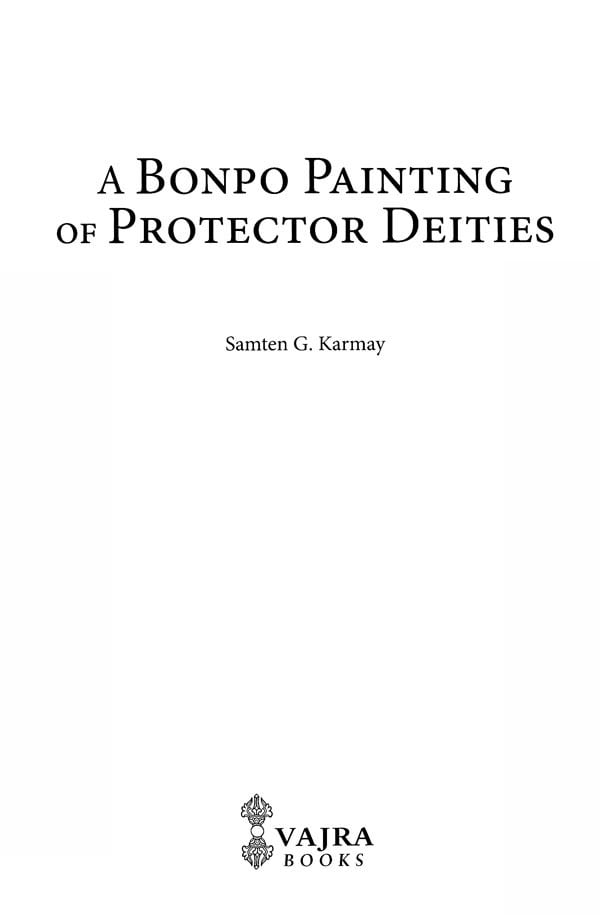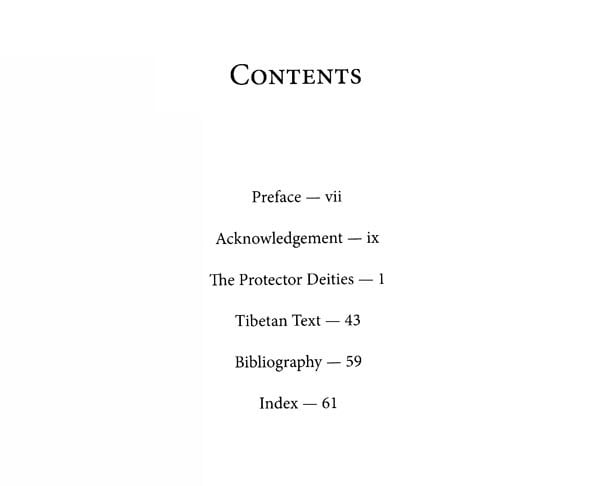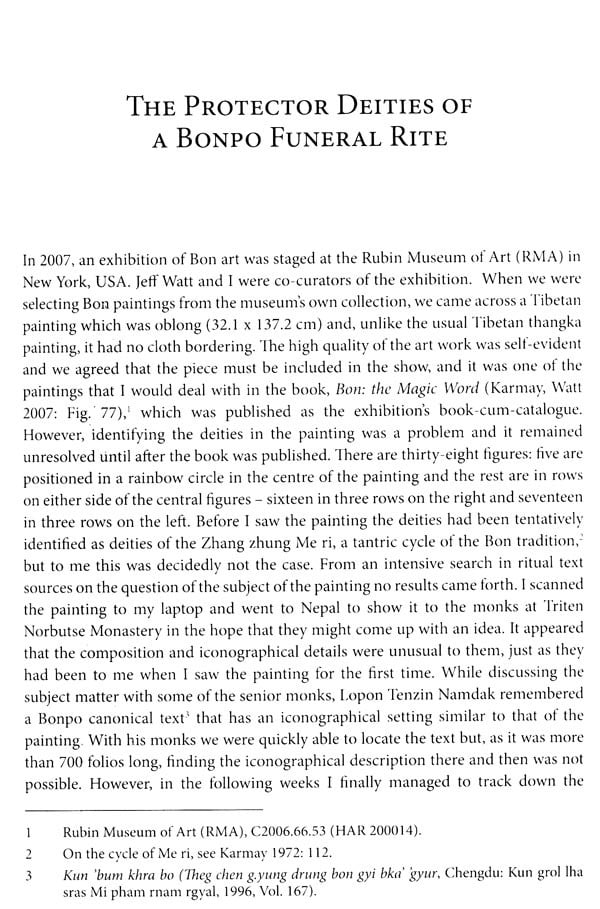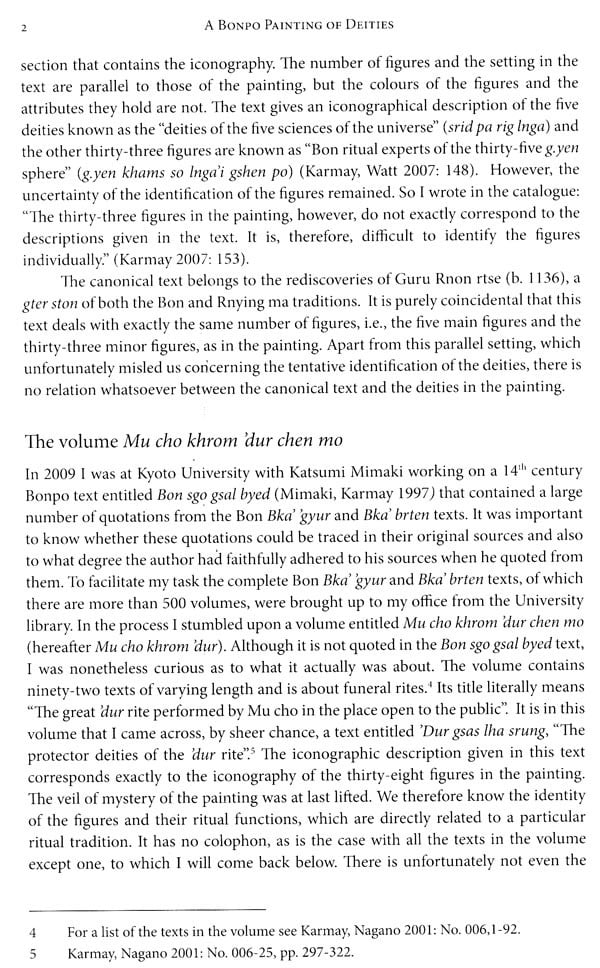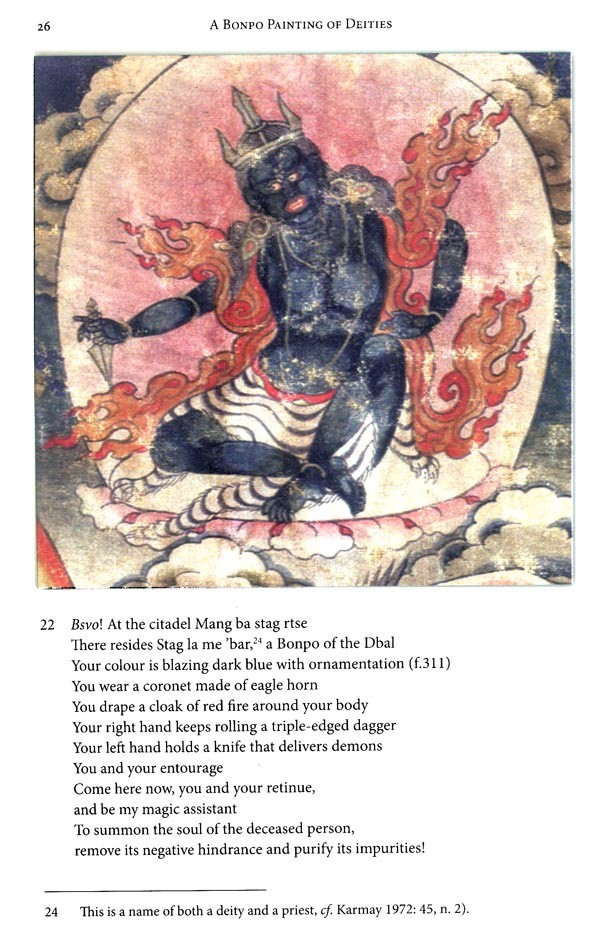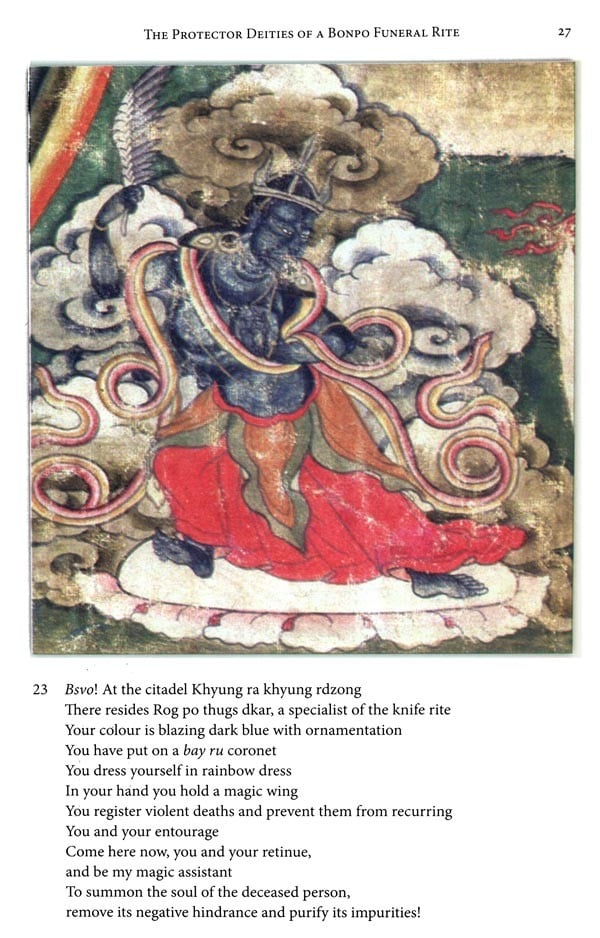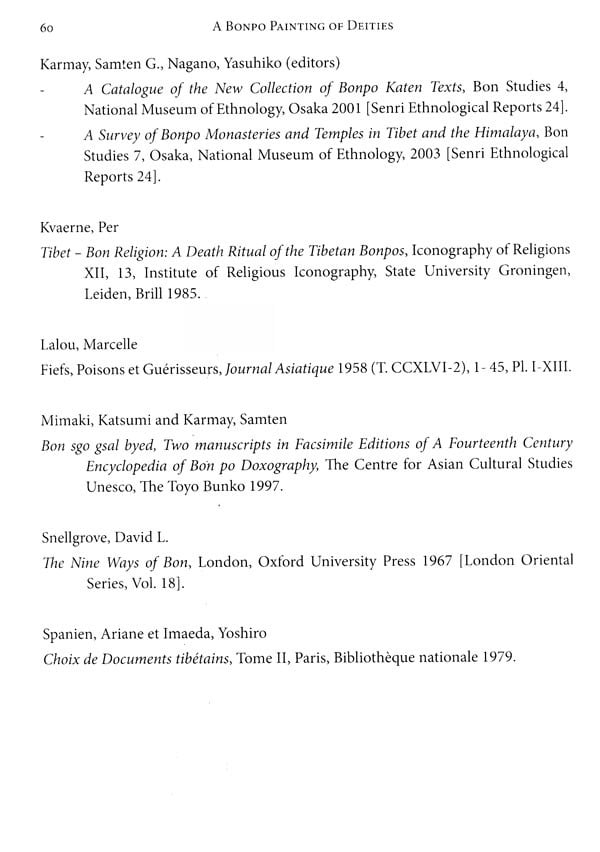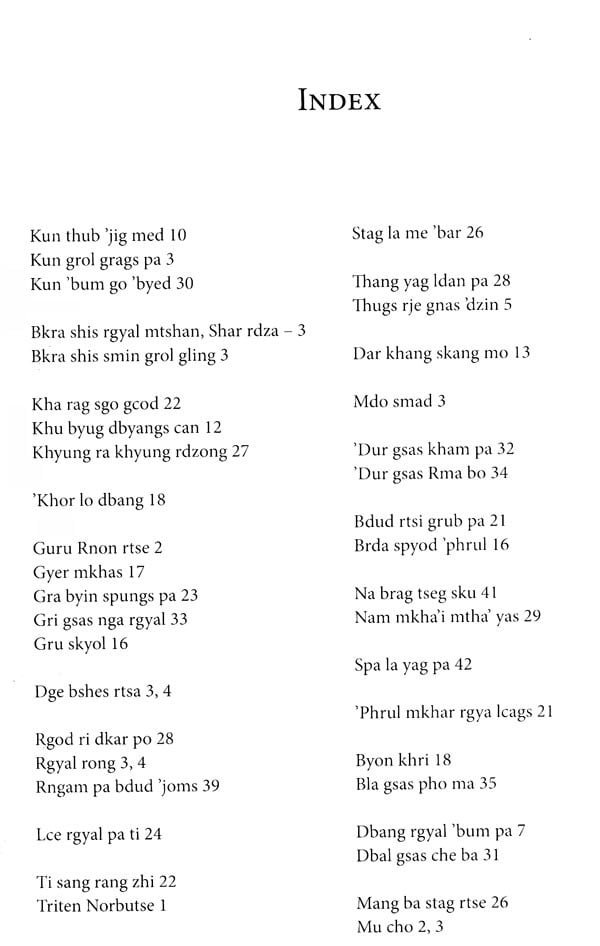
A Bonpo Painting of Protector Deities
Book Specification
| Item Code: | UAO276 |
| Author: | Samten G. Karmay |
| Publisher: | Vajra Books, Nepal |
| Language: | English |
| Edition: | 2015 |
| ISBN: | 9789937623445 |
| Pages: | 68 (Throughout Color Illustrations) |
| Cover: | PAPERBACK |
| Other Details | 9.00 X 6.00 inch |
| Weight | 190 gm |
Book Description
The identification of the deities depicted in the painting was a most intriguing part of the study of this work. It is not known at all who the artist was something that is not surprising since the artists of Tibetan thangkas very rarely sign their names directly on their paintings. Likewise its geographical origin, whether Central Tibet, Kham or Amdo, is not known either. The ritual texts that go with the painting and provide the iconographic description of the depicted deities, and above all the ritual function of the deities and their origins, were not easy to locate. One immediate question that might be raised relates to the date of the painting. To establish this, it has been extremely important to identify its geographical origin. The present study of the painting has therefore endeavoured to answer all these inevitable questions.
After the discussion of these relevant matters a full English translation of the Tibetan ritual text, with annotations, is provided, together with the original text itself in Tibetan script. The work concludes with a bibliography and an index of proper names. I hope this study will help to solve the riddle of this painting and reveal the true significance of its content.
**Contents and Sample Pages**
